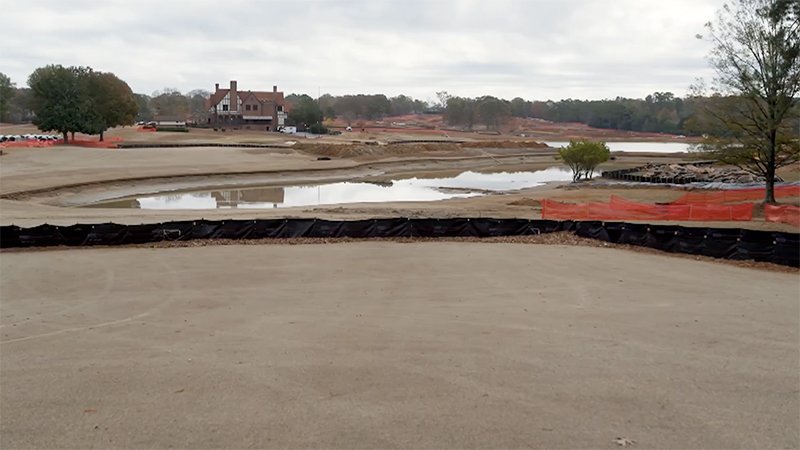The phrase "the more things change, the more they stay the same" might seem like an odd way to describe golf course restoration, but it could just be true in the case of historic East Lake Golf Club.
As the PGA's season-ending Tour Championship tees off this week in Atlanta, the new version of East Lake might be something more like what Bobby Jones would recognize when he was club president in 1946-47.
The recent Andrew Green-led restoration relied heavily on previously unknown aerial photography from 1949.
According to the club, the photo revealed what the course looked like after Donald Ross renovated the original layout in 1913.
Green is the architect of record of other well known restorations, including Inverness Club in Toledo, Ohio; Scioto Country Club in Columbus; Oak Hill Country Club in Rochester, New York; and Congressional Country Club in Bethesda, Maryland.
The new East Lake celebrates the historic past of the club that Jones called home nearly a century ago, and continues to embrace the future and the role the property plays in holding up the East Lake neighborhood.
Rebuilding bunkers was a key part of the restoration project, with architect Andrew Green moving fairway bunkers to squeeze landing areas.
The overall length of the course has not changed much, stretching out to 7,455 yards from the back tees, which is only about 100 yards longer than before the renovation, but the previous par-70 layout will now play as a par-71 after the par-4 14th hole will now play as a par-5.
New tees also were added to accommodate members of differing skill levels.
Putting surfaces all have been completely rebuilt and are larger than before, offering more pinnable locations. In some cases, the greens are substantially larger. For example, the No. 2 green is about 50 percent larger than it was previously, expanding by nearly 3,000 square feet to about 9,000 square feet.
All greens were redesigned with many distinct capes and bays that were patterned after those found in period photography. Those putting surfaces also have been regrassed, with Green replacing the Mini Verde that had been in place since a Rees Jones renovation in 2008 with TifEagle ultradwarf Bermudagrass. Green says the TifEagle-covered greens are firmer and faster than the Mini Verde predecessors and will roll at 13 for the championship.
Green also replaced the old Meyer Zoysiagrass in the fairways with the newer Zorro Zoysiagrass that he says plays firmer and will provide more roll for golfers.
"We really wanted to try to get the player to feel like they're playing more over the natural ground," Green said in a news conference unveiling the changes. "And that meant that we shaped or reshaped fairways to be more natural."

Golfers will get a taste of Green's work right away, on the first hole, a 510-yard par-4
Bunkers along the par-4 17th fairway were removed and replaced with a trench-style bunker that splits the fairway. The fairway-bisecting bunker was part of the original Ross design and was thought to have been lost around 1950.
The par-4 No. 8 hole has been shortened by 40 yards to 390 yards and could be reachable off the tee for some. The fairway winds around the shoreline of East Lake, but a bunker complex short and left of the green will penalize those who come up short of attacking the green off the tee.
"We wanted to make sure we created extra opportunities for exciting golf," Green said.
The club's namesake lake on No. 18 was expanded out to the left side to bring it more into play, and a stream between No. 6 and No. 7 was reclaimed and native habitat restored in that area.
Rebuilding bunkers also was a key part of the project, with Green moving fairway bunkers to squeeze landing areas at varying distances. Greenside bunkers are positioned to improve aesthetic appeal, interest and contrast around putting surfaces. Many of the bunkers throughout the project were based on the original Ross bunkers uncovered in the 1949 aerial photography.
The Tour Championship begins Aug. 29.

